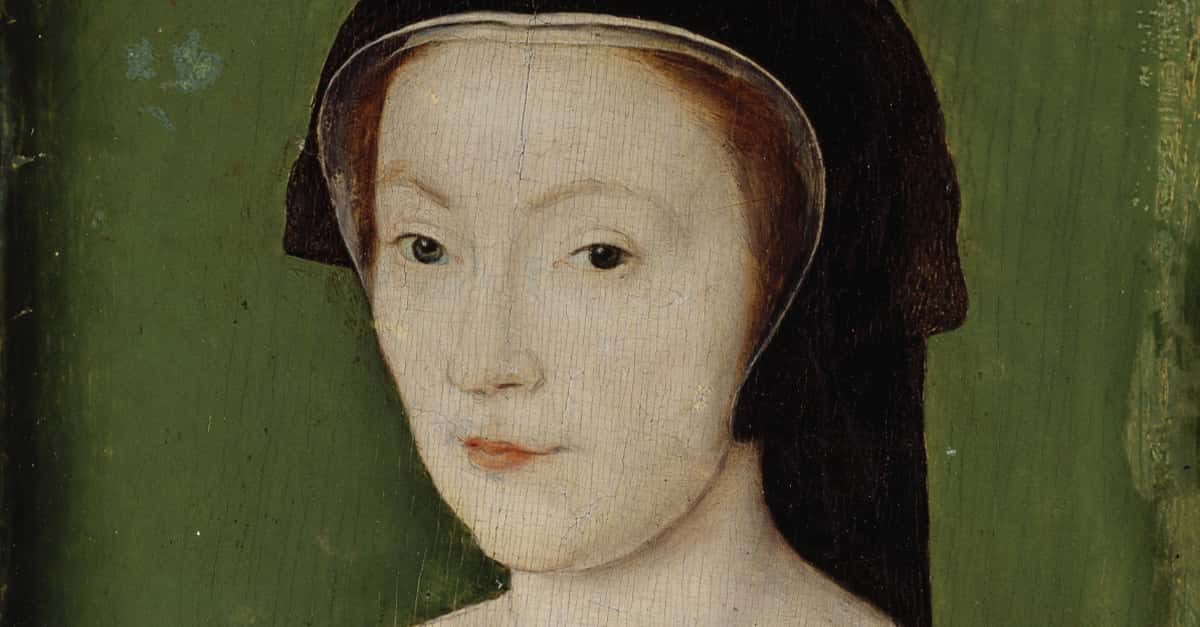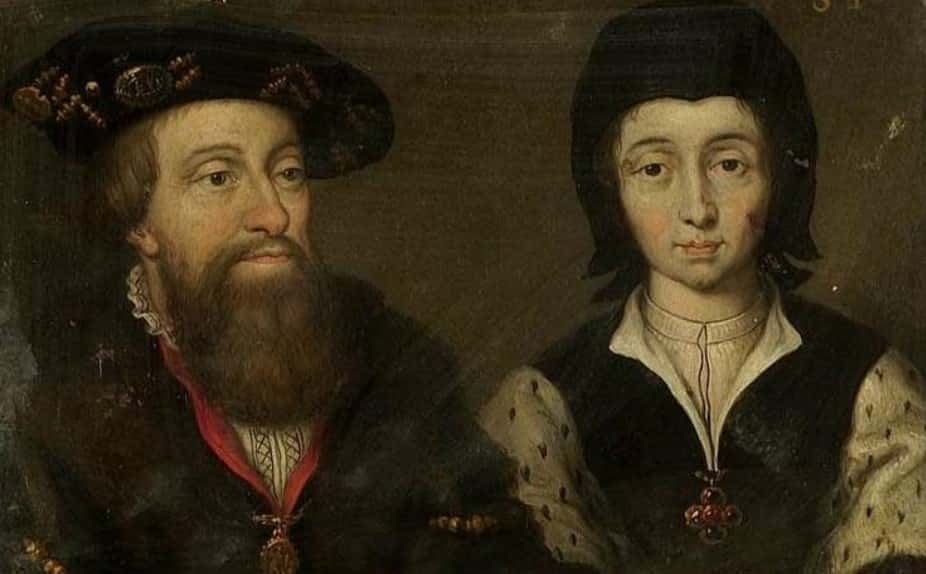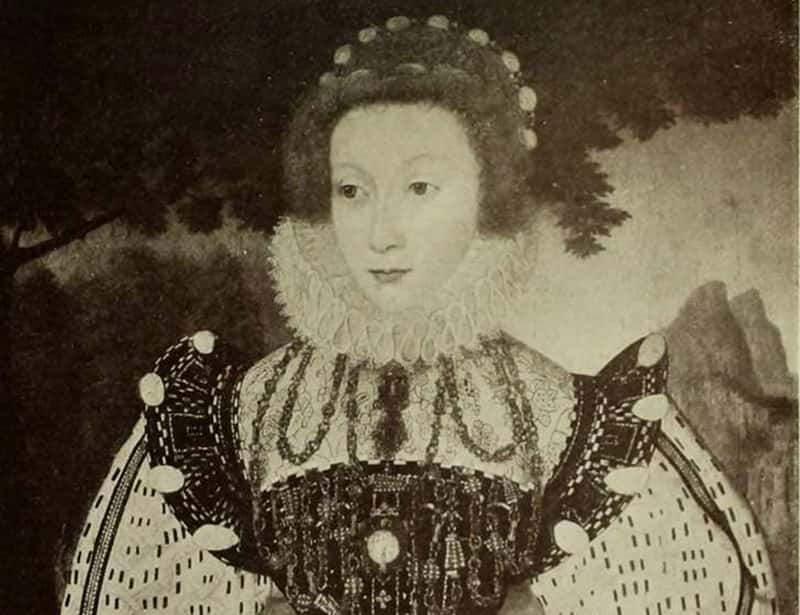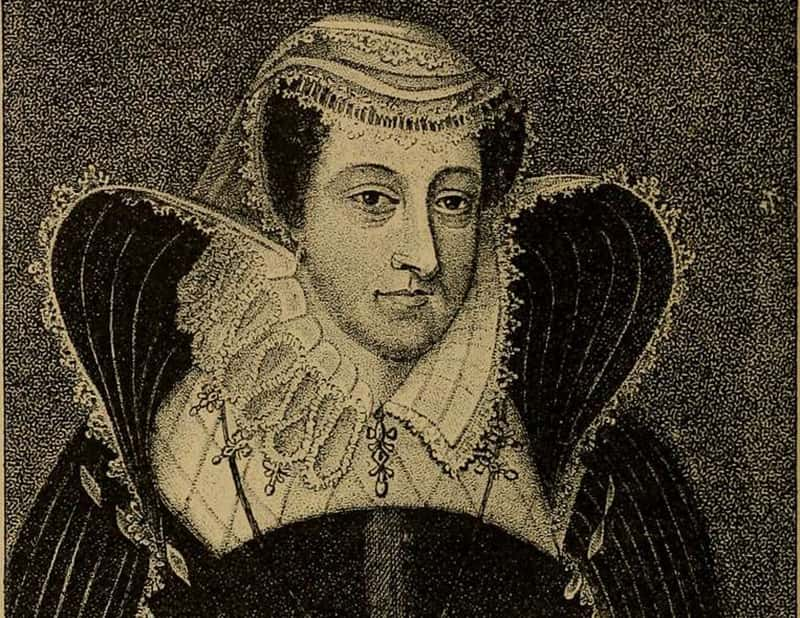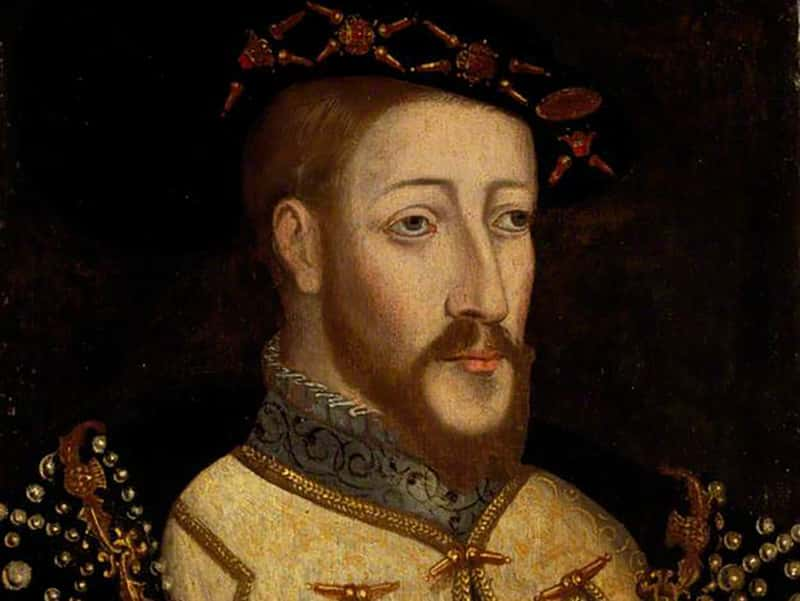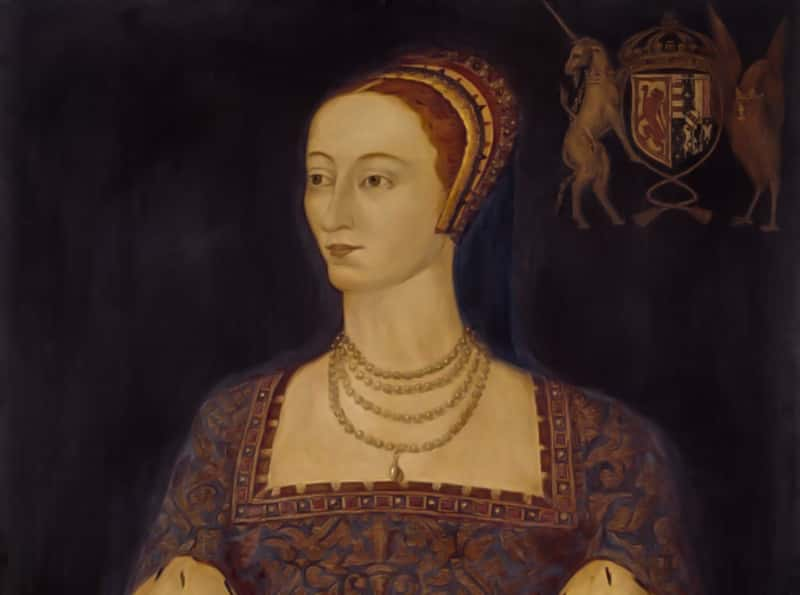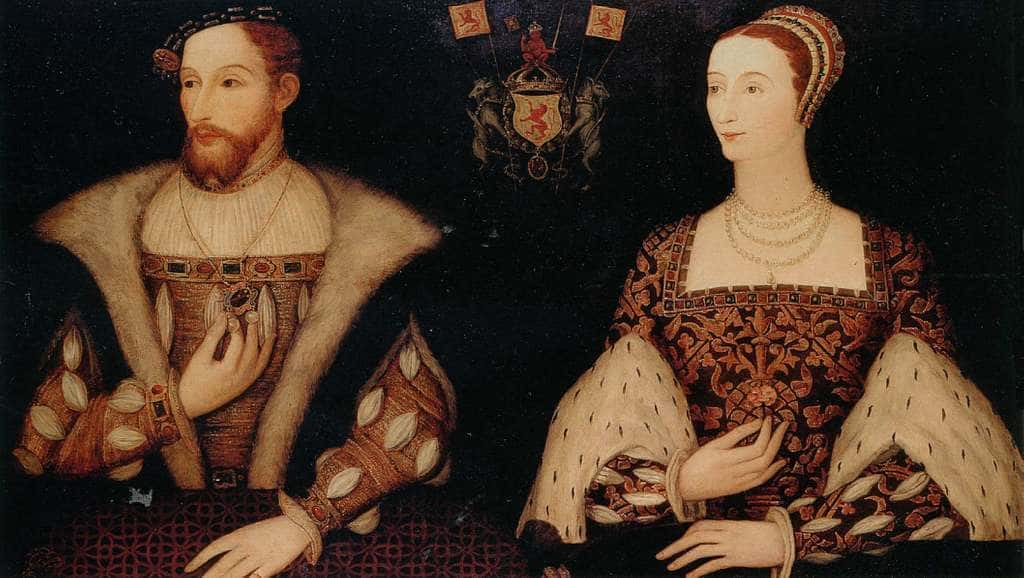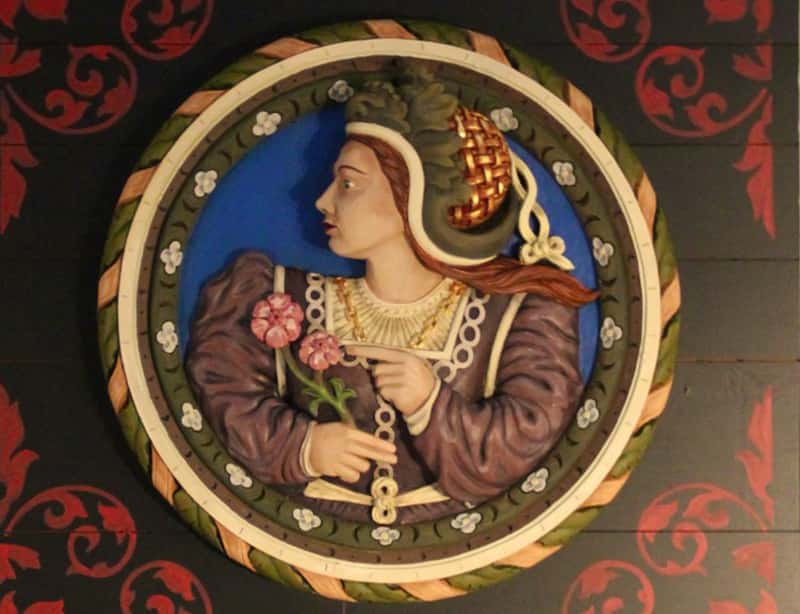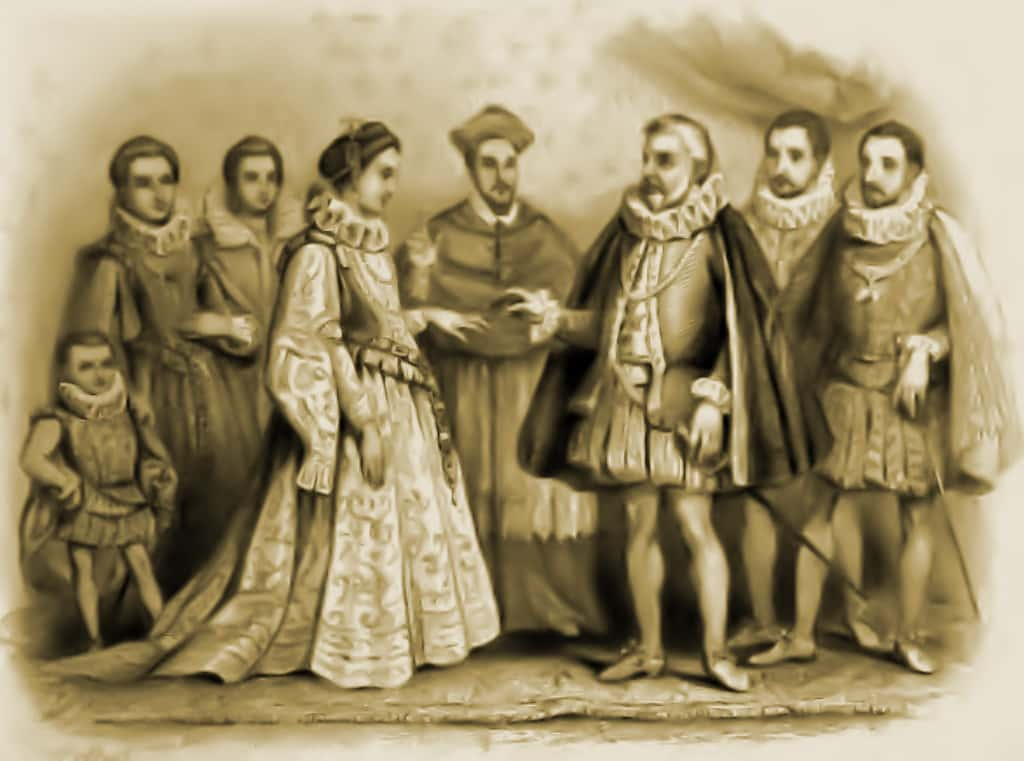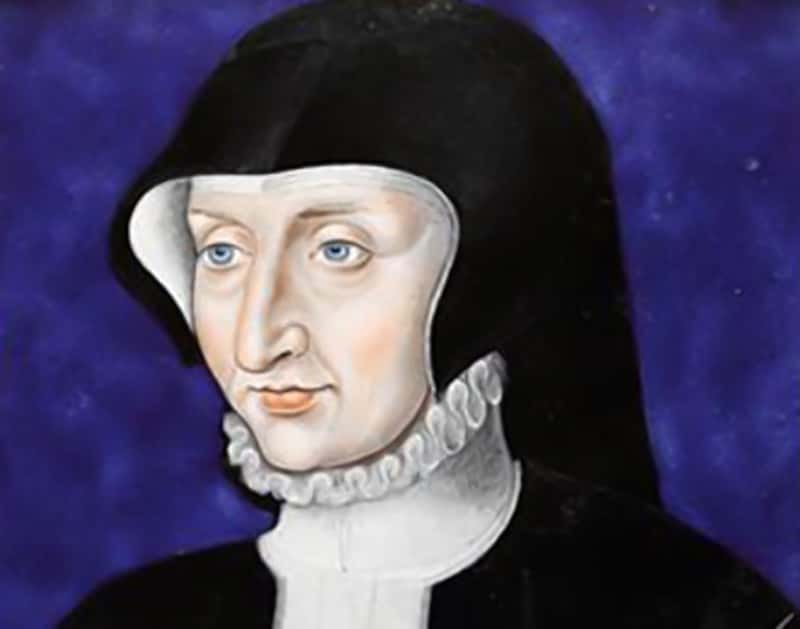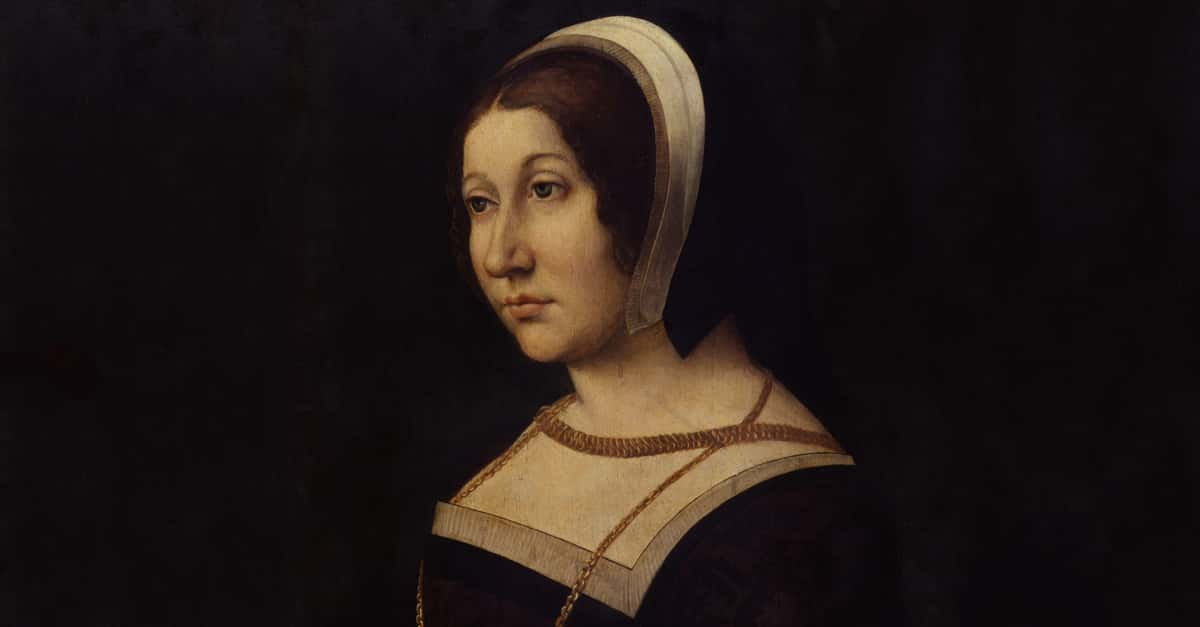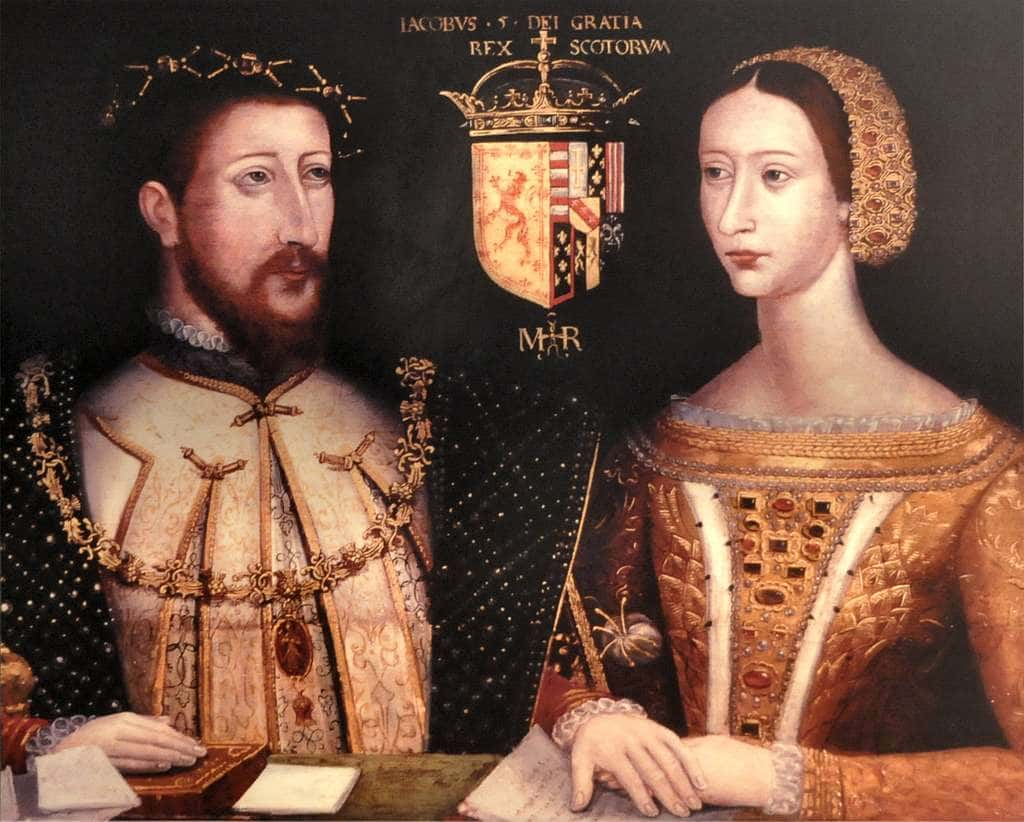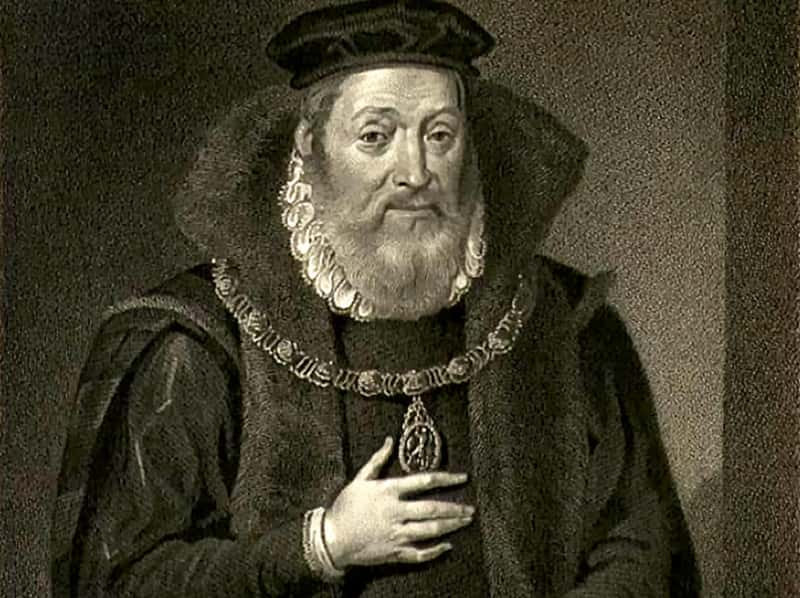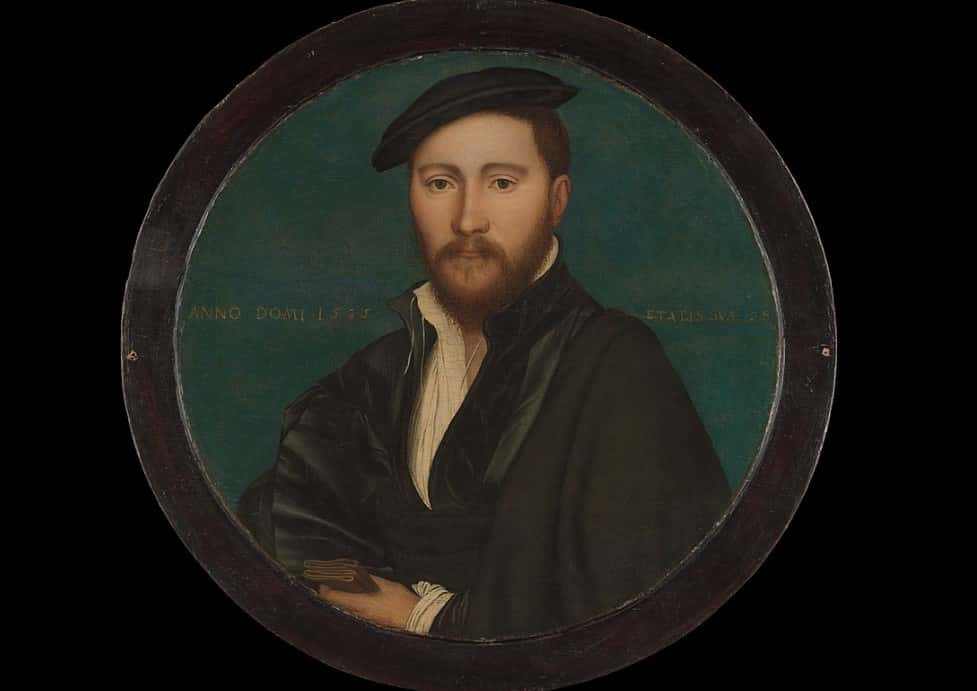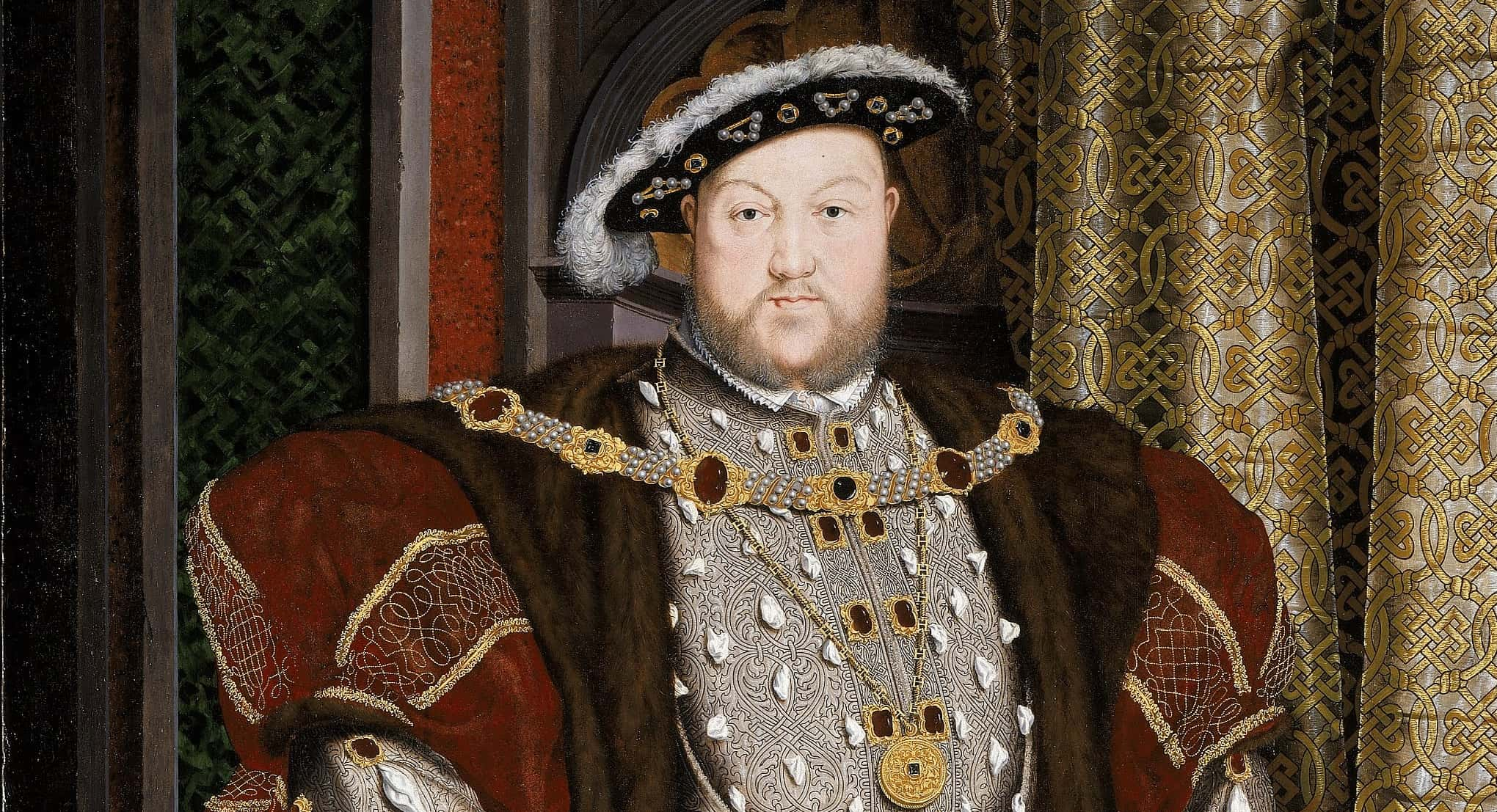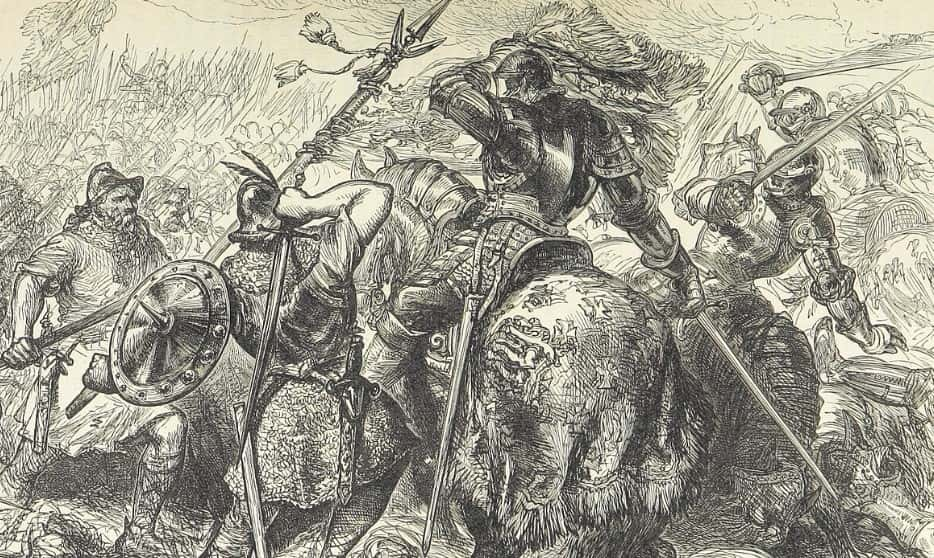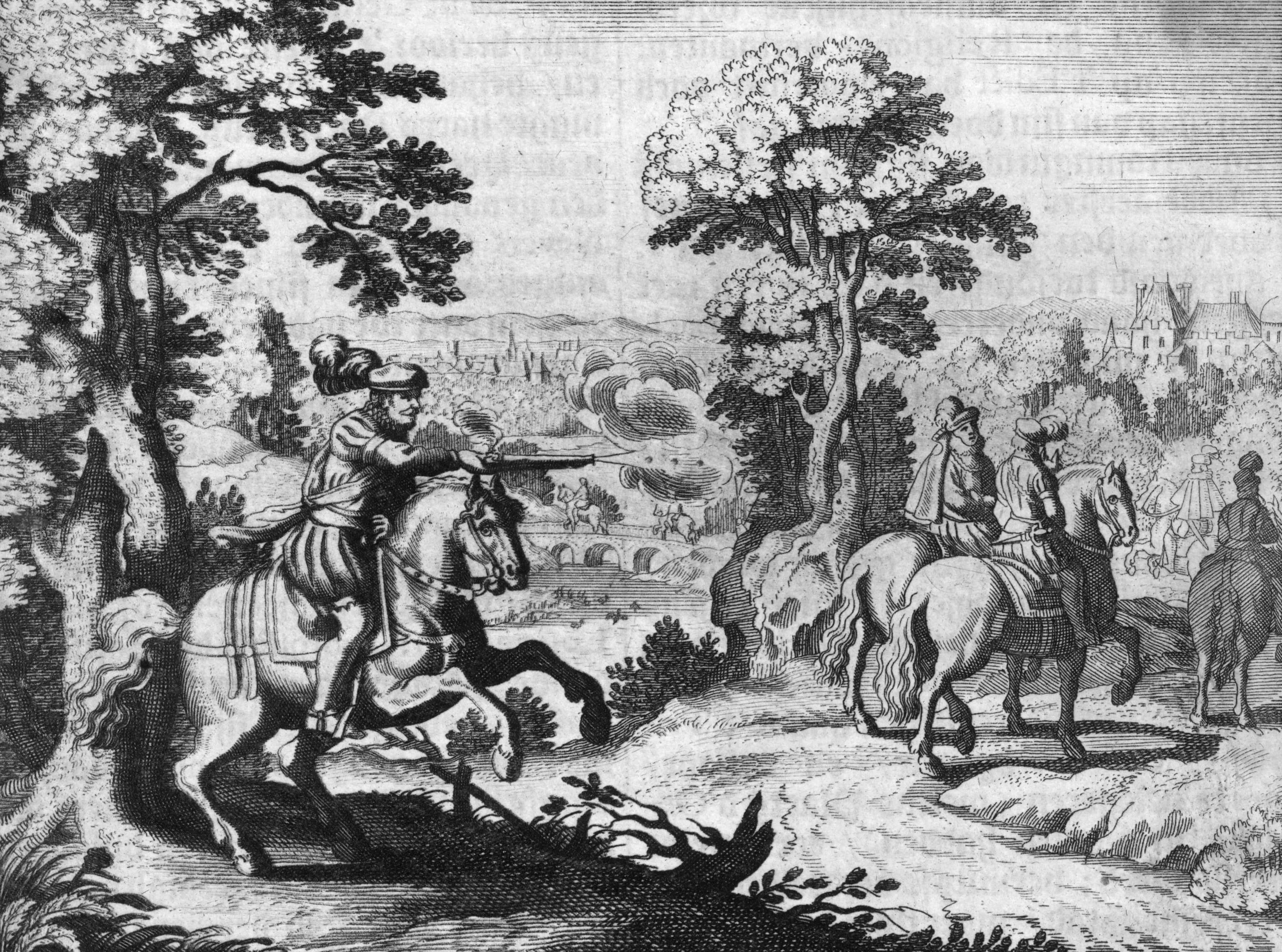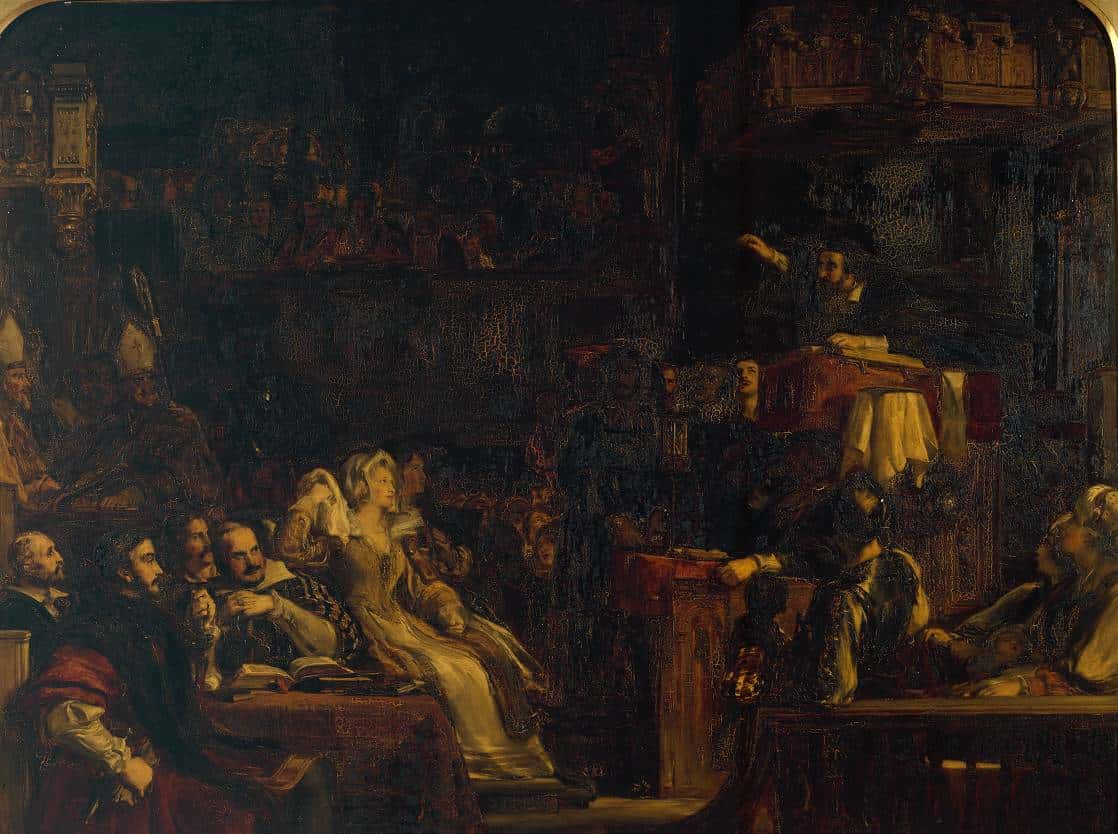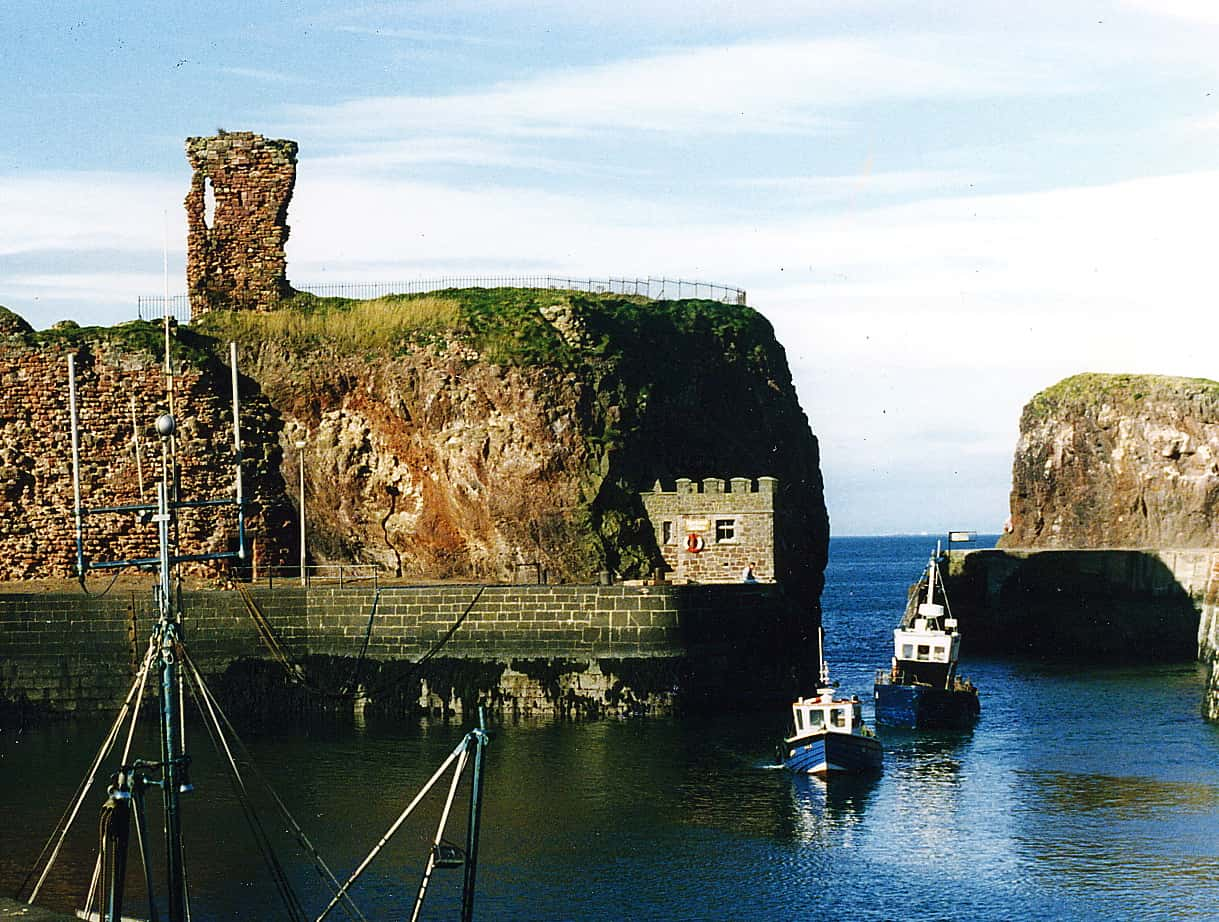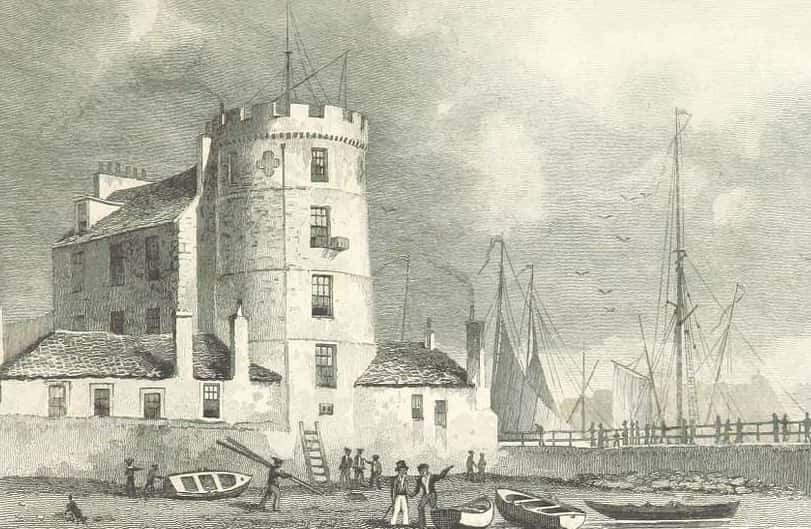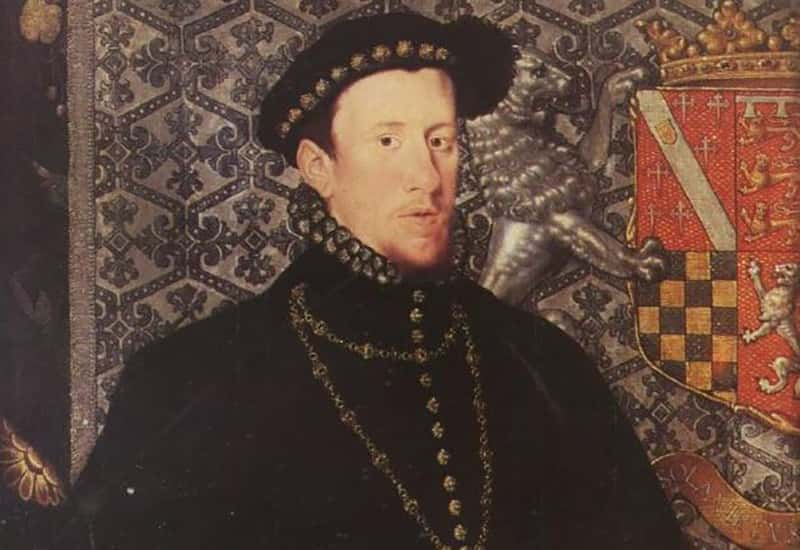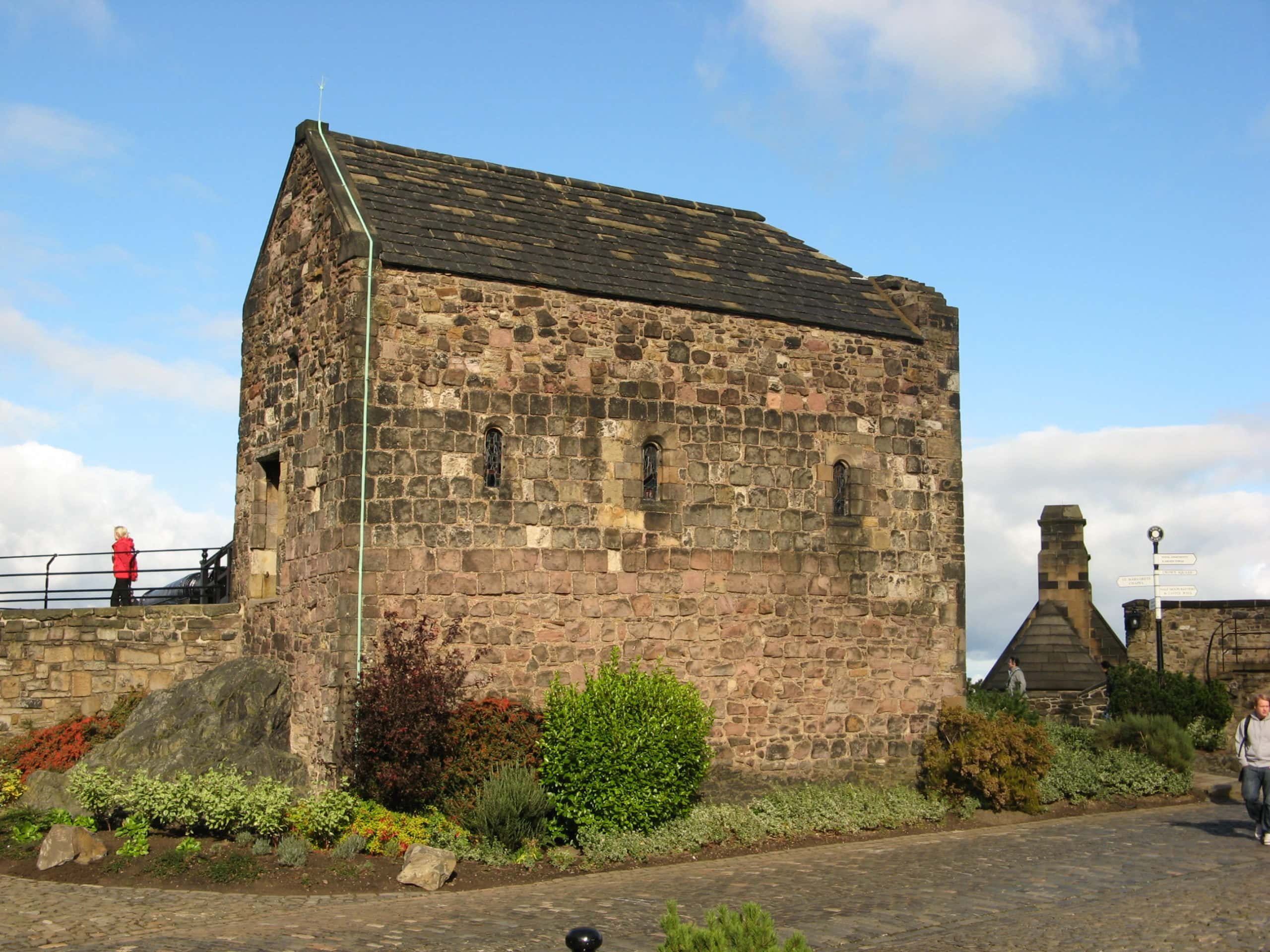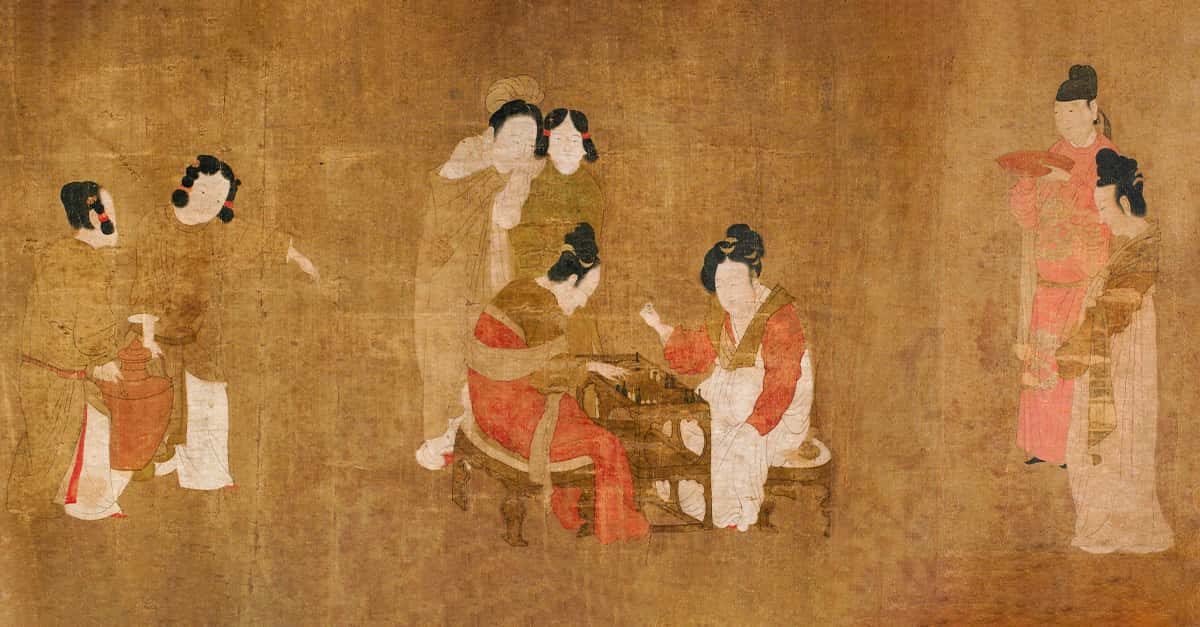Mary of Guise could never have imagined she would have a major role in history. Little did she know, circumstances would toss her into the cutthroat world of European politics. Despite her unlikely rise to power, Mary soon proved that she was one tough woman who could cut it in a man’s world.
1. She Had Noble Roots
Mary of Guise was born at Bar-le-Duc, Lorraine on May 9, 1538, to Claude, Duke of Guise and Antoinette de Bourbon. Her family, a branch of the powerful House of Lorraine, was one of France’s most prominent noble lines. But while she was born with a silver spoon in her mouth, her family's connections came with a whole host of...complications.
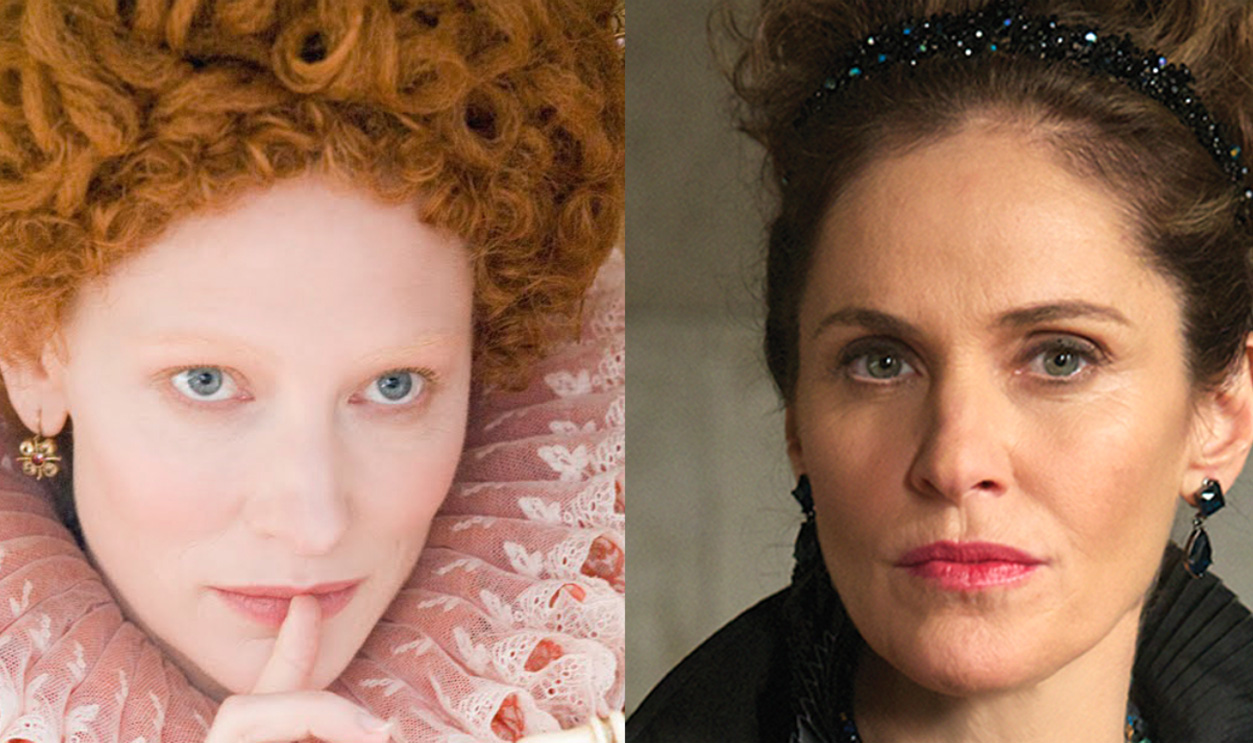
2. She Became A Young Mother
As a child, Mary became a mother—well, a godmother, at least. At the age of five, she became one to her younger sister Louise. Soon after, she went to live with her paternal grandmother, the revered Philippa of Guelders, in a convent at Pont-à-Mousson. She spent the next decade there, seeing little of her family—until she received a timely visit from an uncle and aunt that would put her on a path to destiny.
3. She Reached Great Heights
Mary became known for her great stature. At nearly six feet tall, very few men of her time could match her height, let alone women. When her uncle, the powerful Duke of Lorraine, and his wife visited her at the convent, they decided she had the right attributes. It was time for Mary of Guise to start playing the game of thrones. After some preparation, she made her debut at the wedding of Francis I and Eleanor of Austria.
4. She Made Her Mark
Mary made quite the impression on the French court. Soon, she became part of the royal family’s inner circle, and developed a friendship with the king’s daughters, Madeleine and Margaret. None of them realized it yet, but their destinies would soon be intertwined. As fate would have it, Mary and Madeleine would later share much more than just a friendship...
5. She Found Love
It didn’t take long for people to notice Mary’s striking presence. At the age of 18, she married Louis II d’Orleans, the Grand Chamberlain of France. Through this marriage, she became the Duchess of Longueville. Early in the marriage, she had a son, Francis, on October 30, 1535, and quickly became pregnant again. Unfortunately, tragedy soon marred her perfect life.
6. All Good Things Come To An End
Mary didn’t get to enjoy her marriage for long. Louis met his demise at Rouen in June 1537, leaving Mary a young widow at 21. She was also pregnant with their second son, to whom she gave birth two months later. But the blows just kept coming. Just four months after burying her husband, she lost her newborn child, named Louis after his father. However, widowhood brought some unexpected attention.
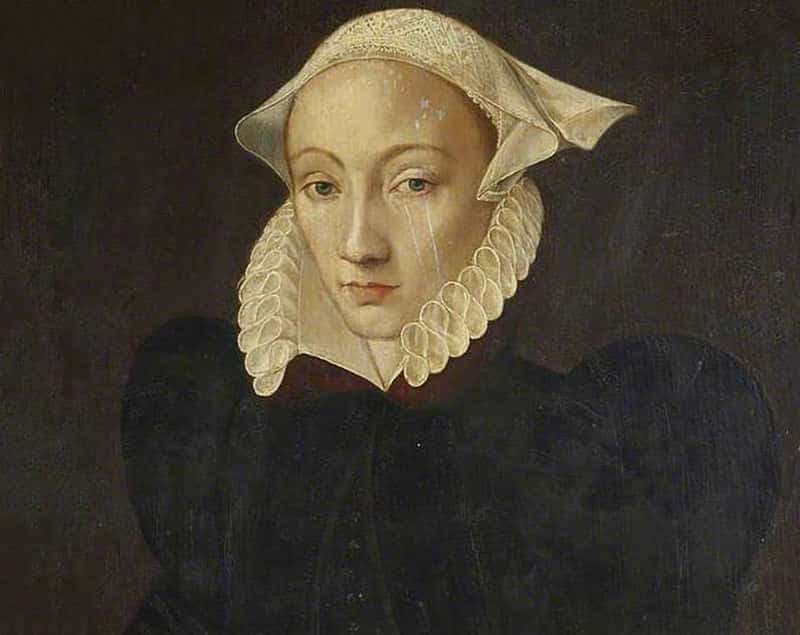 Picryl Supposed Portrait of Mary of Guise
Picryl Supposed Portrait of Mary of Guise
7. She Was Hot Stuff
In 1537, Mary became Europe's most eligible bachelorette. James V of Scotland had just lost his wife, Madeleine of Valois (remember Mary’s old friend?), and he wanted another French bride to strengthen ties between Scotland and France. And wouldn't you know it, he knew exactly who he wanted. It turned out he had a thing for Mary, who attended his wedding to Madeleine.
Now a widower, he was free to pursue her—but he wasn’t the only one interested in Mary.
8. She Caught The Attention Of An Infamous Man
Mary’s other serious suitor was none other than the notorious King Henry VIII of England. Eager to stop a marriage between James and Mary, the newly widowed Henry put his name in the competition for the young widow’s hand. To make things even more complicated, Henry was actually James’ uncle.
But, as you can imagine, Henry’s shoddy track record as a husband meant Mary had other ideas. She rejected his proposal with a cryptic response.
 The Tudors (2007–2010), Showtime Networks
The Tudors (2007–2010), Showtime Networks
9. She Had A Wicked Sense of Humor
Mary was well aware that Henry was used to getting what he wanted, even if it meant chopping his wife's head off. When Mary finally responded to the corpulent king's proposal, she gave a witty, sardonic reply: "I may be a big woman, but I have a very little neck". Cue the air horns.
Mary ended up going with the less axe-happy husband—but her next marriage would be no fairy tale.

History's most fascinating stories and darkest secrets, delivered to your inbox daily.
10. She Had The Value of A Princess
Eventually, King Francis I of France (who had the final say in matters) accepted James’ offer and told Mary’s father. He prepared a marriage contract that included a dowry fit for a princess. The French king treated Mary as though she was his own daughter—though that didn't mean he had her best interests at heart. The French king included the inheritance of Mary’s son in the dowry and didn’t bother consulting her.
Word reached Mary, who began to have concerns about the marriage negotiations.
11. She Started Feeling The Heat
Mary had reservations about a potential marriage to James. It finally dawned on her that she would have to leave her family and France. Having just lost her husband and son, Mary was reluctant to move on so quickly, especially to a foreign country where she didn’t know the language. Her father allegedly attempted to stall negotiations.
Unfortunately, that only made James take matters into his own hands.
12. Her Silence Was A Problem
James suspected Mary was getting cold feet. Fearing the failure of his marriage proposal, he became even more determined to win her hand. The Scottish king allegedly sent her a letter, begging for her support. Perhaps sensing that wouldn't be enough, the King of Scots then sent one of his archbishops to France to seal the deal.
13. She Was A Brilliant Negotiator
After many more months of discussions, Mary finally reached an agreement in January 1538. James received a dowry of 150,000 livres. If Mary outlived him, she would receive control over several palaces and castles as well as income from estates across Scotland during her lifetime. A pretty sweet deal, all things considered. In a show of might and respect, 2,000 Scottish nobles came to Mary’s wedding in France—but one extremely important person was missing.
14. Her Wedding Was Missing One Special Person
On May 9, 1538, Mary married James...but he wasn’t there! Mary wed the king in a proxy wedding in the presence of the Scottish lords, with their leader standing in for James. A month later, Mary traveled to Scotland with the Scottish and French fleets before finally meeting her husband a few days later at St. Andrews. But this wasn't exactly some dream union. Marrying into royalty required a huge sacrifice.
15. She Made A Major Sacrifice
Mary’s ascent to royalty came with a price. When Mary married James, she had to leave her three-year-old son, Francis, in the care of her mother in France. Over the years, mother and son corresponded through letters. The boy once sent his mother a piece of string to show her how much he had grown. In another instance, he sent a picture of himself. Aw!
16. She Made An Impression
In-laws can be hard to deal with, but Mary didn’t seem to have that issue. A month after Mary married James in person in Scotland, her new mother-in-law, Margaret Tudor, was already singing her praises. Speaking to her brother Henry VIII (the runner-up in the race for Mary's affections), she had nothing but good things to say about her new daughter-in-law.
And for her part, Mary wasted no time making herself feel right at home in Scotland...
17. She Created Quite A Home For Herself
Mary quickly settled into her new digs—and she spared no expense. The duchess brought her masons, miners, and an armorer, as well as the French painter Pierre Quesnel, to spruce up her new humble abodes. A dwarf and a jester, both clad in green, became part of her entourage. Yet as extravagant as her lifestyle seemed, it paled in comparison to her coronation.
18. Her Coronation Was A Spectacle
On February 22, 1540, after months of preparation, Mary finally officially became the Queen of Scotland in style. The royal jeweler, John Mosman, specially made a new crown from Scottish gold for her, and Mary also received a gold-plated silver scepter. Celebrations included a fireworks display that James planned for his new queen.
However, all the fanfare couldn't prevent the tragedies that soon plagued the new queen.
19. History Repeated Itself
Mary's second marriage soon hit troubled waters. Mary and James struggled to produce a healthy heir. Their first two children, sons James and Robert, didn’t survive infancy. As Mary grew more and more distraught, her mother ensured her that she would one day have the child of her dreams. Finally, she gave birth to another child; a daughter also named Mary. However, yet again, Mary’s happiness soon turned into sorrow.
20. Her Life Shattered Into Pieces
Just as things were on the ups for our Mary of Guise, disaster suddenly struck. Six days after the birth of their daughter, the king succumbed to a mysterious illness, possibly cholera or dysentery. Prior to his end, the king suffered a military loss against the English. Mary found herself widowed again with a young child after another short-lived marriage. But this time, there was no rest for her.
21. She Watched From The Shadows
At first, Mary stood on the political sidelines. James Hamilton, the Earl of Arran, served as regent for the infant queen. Meanwhile, Henry VIII proposed a marriage between his heir, Edward, and Queen Mary, leading to internal divisions within Scotland. During this time, Mary lived with the little queen at Linlithgow Palace. Yet, despite her inactive role, Mary was never at peace.
22. She Contended With Rumors
Rumors continued to swirl around Mary. Regent Arran spread the story that the queen was in poor health. To prove the rumors were false, Mary showed the baby to John Sadler, the English ambassador sent to negotiate the marriage. Her relationship with Sadler was instrumental in her political fights against Arran, who seemed to be using his position for personal gain.
23. She Was Sneaky
Over the first few years of the regency, Mary and Arran butt heads quite a few times. But Mary had Arran all figured out. Word reached Arran that Henry VIII wanted to marry the queen dowager (again). Arran, out for no one but himself, confronted Mary, who only gave evasive answers. While Arran didn’t get the confirmation he wanted, Mary found out she was right about her suspicions of him all along.
Plus, she knew just how to stick it to him.
24. She Hatched A Plan
Mary realized just how to deal with a man like Arran. During her conversation with him over the rumors of a marriage proposal from the English king, she realized the regent was a fool who couldn't keep his mouth shut. So, she let news of Arran's loose lips reach Henry VIII's ears. Arran may have been regent of Scotland, but his situation was precarious—and Mary made it a lot worse by making him look like a fool in front of the English.
Her scheming solidified her daughter's position as queen—but someone would get the better of Mary sooner or later.
 Reign (2013–2017), CBS Television Studios
Reign (2013–2017), CBS Television Studios
25. Time Was Running Out For Her
After making promises to wed Queen Mary to Prince Edward, Mary couldn’t stall the wedding anymore. After years of waiting patiently, Henry VIII eventually realized that the Scots never intended on keeping their word. Furious, he set out for blood. To force their hand, he declared war on Scotland. After initial setbacks, Mary, with the help of the French, gained new ground, and her power grew.
But fortunes could change fast in Renaissance Europe—something Mary was about to learn the hard way.
26. She Stared Down Danger
In July 1548, Mary of Guise went to Haddington to view the latest developments in the English siege of the city. Mary was a hands-on kind of leader—but that came with its fair share of danger. During her survey, a cannonball landed close to her. Members of her party didn’t survive, and Mary herself fainted from the shock.
Although Mary emerged unscathed, the harrowing event gave enough cause to send the queen to France for her safety. For her part, Mary remained in Scotland to oversee affairs.
 Reign (2013–2017), CBS Television Studios
Reign (2013–2017), CBS Television Studios
27. Her Victory Came At A Price
While the queen went off to live in refuge with the French royal family, Mary continued the fight against the English. She procured more aid from the French, which secured a victory at the siege of Broughty Castle. Although her efforts eventually led to a peace treaty, it came with a condition: Her brother, Claude, became a captive of the English.
Finally, there was peace between England and Scotland, and Mary was free to go to France. But if she thought her troubles were over, she was in for a rude awakening.
28. Her Return Home Wasn’t All Just Play
Mary’s trip to France wasn’t just a long-delayed holiday. It was about getting the dough. Queen Mary was betrothed to the French heir to the throne, and Mary wanted to make sure she brokered the best deal. She also wanted to make sure that she got enough gravy for herself in Scotland. But her pushiness just annoyed everyone, and one person called her "an importunate beggar".
 Reign (2013–2017), CBS Television Studios
Reign (2013–2017), CBS Television Studios
29. Her Family Reunion Was Bittersweet
Mary’s return to France allowed her to reunite with her children. After years of separation, she finally got to see her son, Francis, from her first marriage. Unfortunately, Francis wasn’t in good health. Mary nursed him as best as she could—but there was nothing she could do to save him. Though she had to return to Scotland, Mary was at least able to be by her son's side when he perished.
But she didn't have time to mourn—there were big things in store for her across the English Channel.
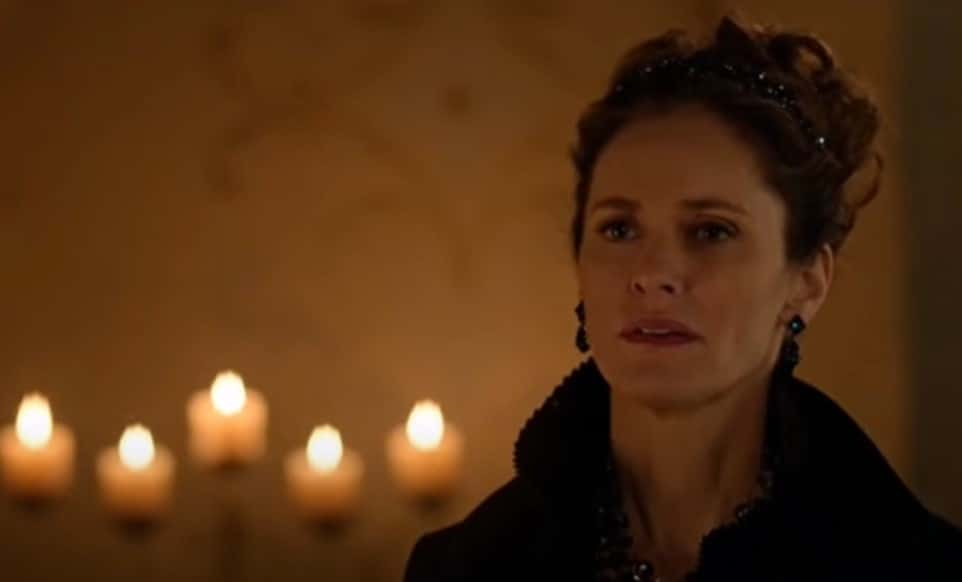 Reign (2013–2017), CBS Television Studios
Reign (2013–2017), CBS Television Studios
30. She Took Matters Into Her Own Hands
Upon her return to Scotland, Mary got right back to work. She used her growing power to her advantage. After a previous failed attempt to oust Arran as regent, she finally managed to achieve her goal. In April 1554, Mary became the regent. Rumor has it the French ambassador placed a crown on her head to display a strong appearance of her authority. And so began Mary’s regency.
But you know what they say about heads that wear crowns...
 Reign (2013–2017), CBS Television Studios
Reign (2013–2017), CBS Television Studios
31. She Worked Fast
As the new regent, Mary hit the ground running. She wasted no time in handling internal Scottish conflicts, such as the old rivalry between the Scott and Kerr clans. In another instance, she provided aid to an earl to deal with a wayward Scottish lord. But that was just the beginning. As she dealt with domestic matters, Mary looked beyond Scotland’s borders for further help in governing the country.
 Reign (2013–2017), CBS Television Studios
Reign (2013–2017), CBS Television Studios
32. Her French Connections Were Handy
Mary’s strong French links worked to her advantage. Her brothers held government positions, so she worked with them to ensure Scotland and France had the same political agenda. During her regency, Mary also placed Frenchmen in important government roles, such as the Head of the Treasury. The appointments favored Mary, but the Scottish nobility viewed things differently.
She would soon learn that her position as regent was far more precarious than she assumed.
33. Her Decisions Came Back To Haunt Her
It seems Mary should’ve adopted a hire-local approach. Her recruitment policy strengthened Scotland’s diplomatic position in Europe, but it ruffled feathers within the Scottish nobility. The simmering bitterness amongst the aristocrats boiled over when they defied orders to march into England and launch an attack. However, this wasn’t the only problem Mary had on her hands.
34. She Made A Surprising Gamble
During her regency, Mary walked a religious tightrope. Although staunchly Catholic, the regent dealt with the increasing power of Scottish Protestants by showing them leniency. Facing increasing hostility from the Scottish nobility, who feared a potential French takeover of their country, she needed their support. However, her decision turned out to be a major mistake.
 Reign (2013–2017), CBS Television Studios
Reign (2013–2017), CBS Television Studios
35. Her Worries Grew
With the ascension of Elizabeth I, a Protestant, to the English throne, the political tension in Scotland grew. All eyes were on the Queen of Scots as various factions had a vested interest in her possible claims to the English crown. The power struggle between the Protestants and the Catholics in Scotland drew attention and reactions from both France and England. Now, Mary had to watch out for both insiders and outsiders who sought to usurp her power.
 Mary Queen of Scots (2018), Focus Features
Mary Queen of Scots (2018), Focus Features
36. She Received A Surprise
Seeing blood in the water, Mary’s enemies became even bolder. A group of Protestant Scottish nobles called the "Lords of the Congregation" sent her a letter stating their position on Scottish affairs. But they chose an...interesting way to deliver their message. Mary found the letter on her seat in the Chapel Royal of Stirling Castle. Shocked, she secretly hid it in her dress.
37. She Learned A Hard Lesson
As if she didn't have enough on her plate, the common folk were also becoming a headache for Mary of Guise. Parishes planned to amend religious activities. They increasingly wanted Protestant ministers to preach in their communities, and Mary noticed these changes. Concerned, she ordered the ministers to discuss their doctrines with her, but relented when faced with pressure from nobles in the west.
Her power was slipping—and it was only going to get worse.
 Elizabeth (1998), Working Title Films
Elizabeth (1998), Working Title Films
38. She Was One Tough Mama
1559 saw a turning point for Mary of Guise. A mysterious document, The Beggars’ Summons, began circulating, calling for the removal of friars. Its goal was to arouse the deep feelings of resentment the public felt for the friars—and it worked like a charm. Scotland was already a powder keg, and it seemed some people were ready to see it explode.
Once again, Mary commanded the Protestant ministers to come and see her. This time, however, she wasn’t going to back down so easily.
 Elizabeth (1998), Working Title Films
Elizabeth (1998), Working Title Films
39. Her Actions Had Consequences
Mary had a hard fight on her hands. The Protestants didn’t take her summons well. They gathered in Dundee to be part of the preachers’ convoy to Stirling Castle, where Mary awaited them. There, John Knox, a minister, gave sermons, which incited the group to destroy Catholic places of worship. Unlike in the past, Mary decided that she needed to teach them a lesson—but did she still have it in her?
40. She Ate Her Words
Well, Mary bit off more than she could chew. She had her troops go to Perth, which the preacher's convoy had sacked on their way to Stirling. Unfortunately, her plan fell apart when another group of Protestants appeared there as reinforcements. Realizing her chances of a victory were slim, Mary had no choice but to seek a truce. It was a major setback, and yet the worst was yet to come.
 Elizabeth (1998), Working Title Films
Elizabeth (1998), Working Title Films
41. Things Got Worse For Her
Mary just didn’t get the message. Her pro-French policies weren’t endearing her to the Scots. When she placed French troops in Perth, two of her ambassadors, the Earl of Argyll and the Earl of Moray, switched sides. Even worse, they joined the Lords of the Congregation, where they met a familiar face—John Knox. It was the beginning of the end for Mary of Guise.
42. She Was On The Move
The Congregation’s activities forced Mary to go on the run. In the months following her ambassadors’ defection, Edinburgh came under the control of the Congregation, forcing Mary to withdraw to Dunbar. Eventually, both sides agreed to peace, with the terms written in the Articles of Leith, which gave the Protestants religious freedom. However, the truce didn’t last long.
43. She Made A Comeback
Mary gave it as good as she got it. She placed her French mercenaries in Fife, where they destroyed the home of a member of the Congregation. In a show of triumph, she apparently mocked Knox, asking, "Where is now John Knox's God? My God is now stronger than his, yea, even in Fife". But as they say, every dog has its day, and Mary’s comeuppance came hard.
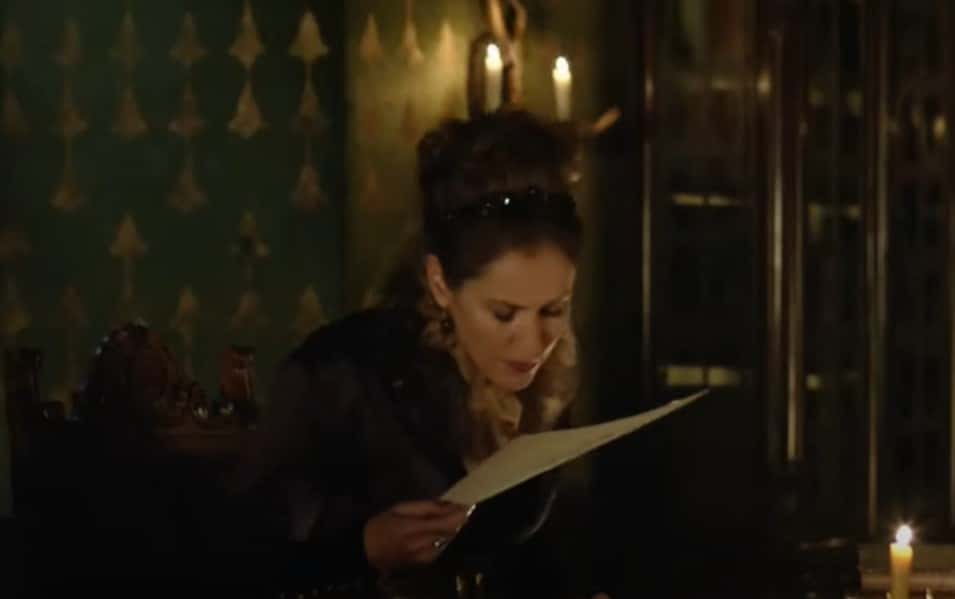 Reign (2013–2017), CBS Television Studios
Reign (2013–2017), CBS Television Studios
44. Karma Got Her
The fighting went on for a few months in Fife, with the Catholics winning. Just as Mary was on the cusp of victory, fate pulled the rug from under her. In January 1560, the Protestants received a miracle: An English fleet came to their rescue. The arrival of the fleet forced Mary’s troops to withdraw from Fife—and what happened next was yet another nail in her coffin.
45. She Had Her Hands Full
Just when things couldn’t get any worse for Mary, they did. After her army retreated from Fife, the Congregation entered an alliance with the English. Their joint goal? To kick the French out of Scotland. The English sent a land force to help the Scottish Protestants launch a combined strike against the French in a siege at Leith. Still, Mary didn’t give up that easily.
46. She Put Up A Good Fight
Mary didn’t go down without a serious fight. She didn’t just let the Anglo-Scottish alliance walk all over her. The strike on Leith lasted months, and Mary’s resolve earned her respect from her enemies. An English Ambassador said she had the "hart of a man of warre," while an English bishop called her "a woman with a man’s courage". Her efforts paid off.
47. Her Fight Came At A Huge Price
The Scottish and English Protestants couldn’t bring Mary down. Despite their joint efforts, they couldn’t get into Leith. Mary’s side held their ground, but it came at a heavy cost. Finally, the Congregation’s leaders met with Mary over dinner in May 1560. However, the talks abruptly ended the next day over the presence of the French leaders.
Peace would not come easily, it seemed—but at the moment, that was the least of Mary's worries.
 Elizabeth (1998), Working Title Films
Elizabeth (1998), Working Title Films
48. She Met A Mysterious End
Over the following weeks, something strange happened to Mary. Considered by many to be the picture of health, the regent fell badly sick. Over a period of eight days, she lost the ability to focus and, on some days, the ability to speak. On June 11, 1560, she took her last breath, three days after she wrote her will. The official cause was edema—but many suspect the truth was far more sinister.
 Reign (2013–2017), CBS Television Studios
Reign (2013–2017), CBS Television Studios
49. She Continues To Court Rumors
The speculation over how Mary’s life ended continues. Some believe Queen Elizabeth had a hand in it, or at the very least, her supporters did. However, there was an autopsy, and contemporary accounts support the official diagnosis. Also, none of her peers noticed any indications to prove otherwise. Either way, Mary of Guise's regency in Scotland had come to an end.
Though she ruled for only a short time, she had an outsized effect on Scotland’s future.
50. She Made An Impact on Scotland
With Mary no longer in the picture, the inevitable happened. In the wake of her passing, France and England signed the Treaty of Edinburgh and promised to pull their respective men out of Scotland. The French also offered the Scots the right to call on parliament according to the law. The treaty gave power to Scottish Protestants, paving the way for the Scottish Reformation.

